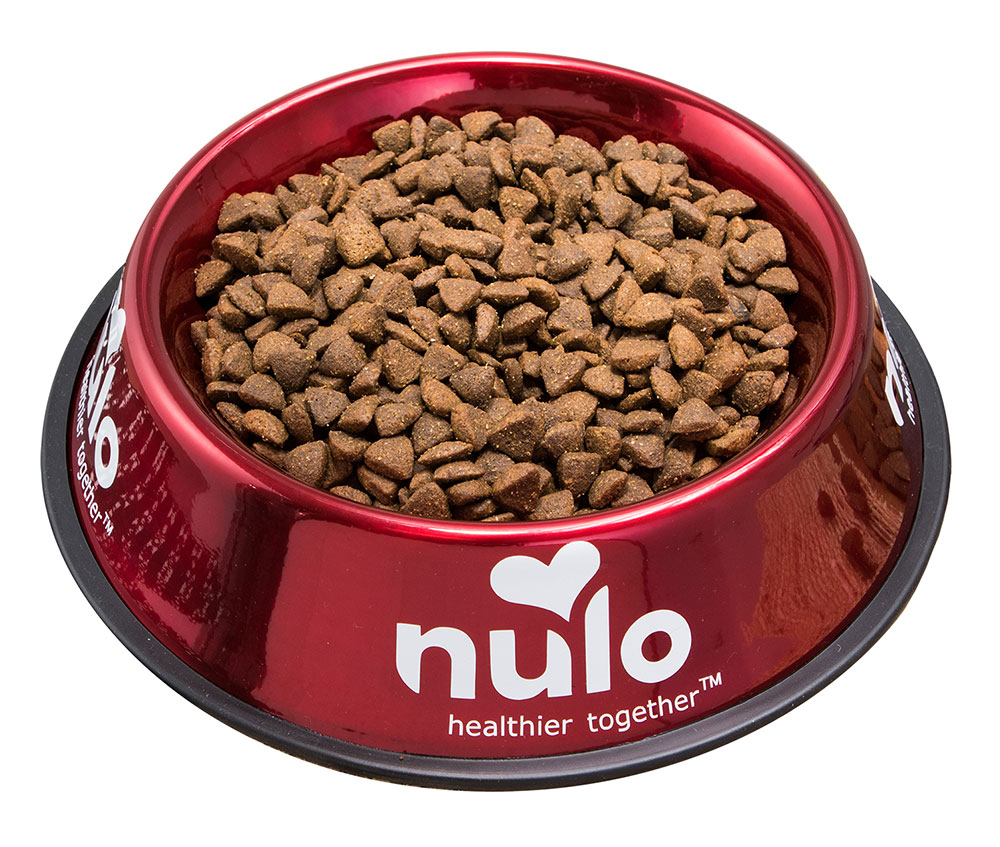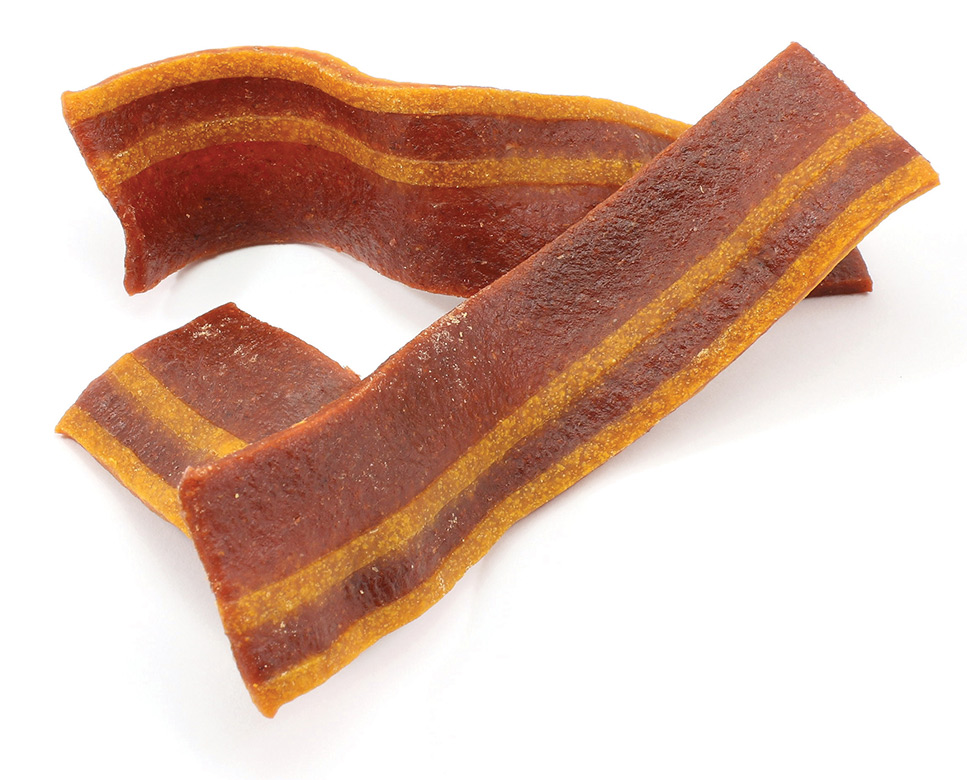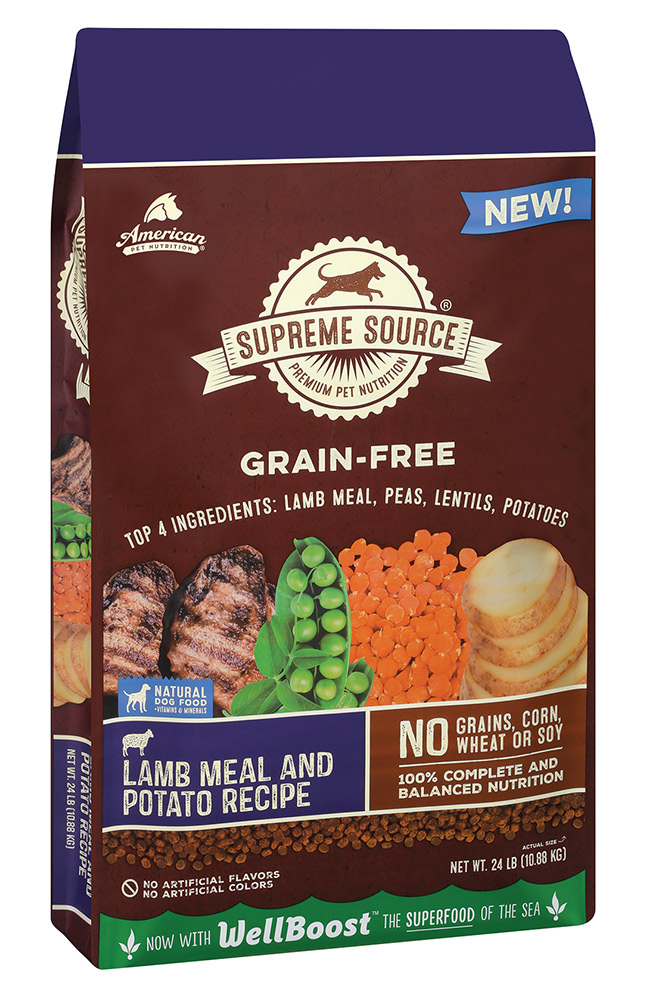Although Petco’s recent list of banned artificial colors, flavors and preservatives provides some definition to what is considered clean label pet food, consumers look for other ingredients outside of this list to be included as well as excluded from the pet foods they buy. Processors and ingredient suppliers must collaborate to find ingredients that meet both efficacy requirements and the consumers’ standards when formulating clean label kibble.
The perception of what qualifies as clean label is driven by the consumer. “For some, clean label is an all-natural product with no artificial preservatives, for others it may be considered as a limited ingredient diet or an ‘ingredient I can pronounce,’ and still other pet owners prefer to see specific ingredients excluded from the product,” says Eric Altom, Ph.D., technical nutritionist, Balchem Animal Nutrition and Health, New Hampton, New York. “Many complete and balanced pet foods currently in the market reflect the different perceptions of what pet owners believe is a clean label product, which continues to be ever-changing and evolving.”
Formulation concepts that could be considered by pet owners as clean label in the pet food industry include all-natural preservatives, non-grain carbohydrate sources, non-GMO ingredients, natural colors and flavors, limited ingredient diets, no by-product protein sources, organic, vegetarian, vegan and locally sourced or made in the US. Label-reading, health-conscious pet food consumers are pushing the industry for more of these options. 
Where to start?
Clean label concepts can be confusing and difficult for pet food product developers to define. To organize a reformulation project, it’s important to start with a clearly documented product design. “The team needs to document the desired species (dog or cat), life-stage, life-style (level of activity), acceptable ingredients, specific ingredients to exclude, expected vitamin and mineral sources, type of proteins, fats, and carbohydrates to include and the preferred preservative platforms,” Altom suggests. “The more criteria the team can document on the front end of the project, the greater the chance of meeting the end goals of the project for both the nutritional needs of the target pets and preferences of the pet owners.”
As the product development team selects ingredients that meet the product design requirements, Altom says it’s important to consider the ingredient composition including its carrier material, the country of origin for raw materials, where the final ingredient is manufactured and the supply chain stability.
“Many complete and balanced pet foods currently in the market reflect the different perceptions of what pet owners believe is a clean label product, which continues to be ever-changing and evolving,” says Eric Altom, Ph.D., Balchem Animal Nutrition and Health.
With choices come compromises. “Evaluate the total formulation, paying attention to how your chosen ingredients adjust pH, water activity and moisture level, because all those factors can affect spoilage,” says Robert Ames, senior business development manager, Corbion, Lenexa, Kansas. “Consider the market trade-offs. Giving up some degree of product performance may improve sales and market access. Also, thoroughly research the ingredient source. In clean label, it is extremely important to choose a supplier who can bring science-based, research-backed solutions that perform consistently.”
Hard to say good-bye
Certain formula adjustments are easier than others. Transforming a current product to a natural preservative system may require minimal adjustments and validation, according to Altom. Removing a major protein source or a major carbohydrate source is a much more complex reformulation project and could require requalification of the product with additional feeding assessments.
Another challenge that has no easy solution is related to the required vitamins, minerals and other necessary nutrients for complete and balanced pet food diets. Many pet owners prefer ingredients they recognize and can pronounce on pet food labels. For this reason, some of the more challenging ingredients to address are vitamins and minerals. “Pets require specific vitamins, minerals, fatty acids, and amino acids in defined qualities in their diet each day for a healthy life,” Altom explains. “The sources of the nutrients must be readily bioavailable to the pet so many vitamins and minerals are supplemen-ted from concentrated sources to ensure no potential nutrient deficiencies. The Association of American Feed Control Officials (AAFCO) requires supplemental vitamins and minerals to be listed on packages by the approved names. Although some of the names may be difficult to recognize and pronounce, education of the pet parent rather than removal of the ingredient is the best course of action.”
For other ingredient categories such as colorants, clean label alternatives can be limiting. Rountree says, “Copper chlorophyllin is definitely one of the most challenging to clean up since the regulations on what can be used for green are extremely limited. There are very few alternatives that have a secure supply chain for that hue. Red #40 has always been a challenge to match without using a much higher use rate to get the same color. The good news is that new products are getting closer every year.”

For certain artificial ingredients that fail to meet pet owners’ criteria for clean label, processors may struggle to part with what these ingredients offer. “Synthetic antioxidants like BHT, BHA, ethoxyquin; mold-control agents like sorbate, propionate and citrate; and humectants like propylene glycol – these may be some of the most difficult to replace with a clean label solution because they are both effective and inexpensive,” Ames says. “In pet foods, natural antioxidants like plant extracts can delay oxidation and the formation of off flavors during shelf life. But there is still room for innovation in this area. Although natural alternatives are effective, they have not yet been able to match synthetic ingredients for maximum shelf life.”
Reformulating a pet food to meet predetermined clean label criteria can take from six months to two years to complete the full product development cycle for a commercially viable product, Altom says.
Clean label diets can add complexity to the production process. “If a product is designed to exclude specific ingredients, the production schedule must accommodate this facet and ensure the total production system is free from the excluded ingredients,” Altom adds.
Natural colors could potentially cause stability challenges that might require adjustments on the development and customer experience sides. “For example, using turmeric for a yellow color would work best for a product in an opaque bag in order to maintain light stability,” Rountree says. “Also, be prepared for the cost increase associated with using natural color in the formulation. The recommended use rates for natural colors are usually higher in order to give the desired vibrancy. Being able to formulate some flexibility either into the wet or dry ingredient portions in the pet food recipe can make all the difference.”
Challenge accepted
The demand for ingredients that meet pet owners’ discriminating preferences has provided industry suppliers the opportunity to innovate, and many have met the challenge.
DDW created a line of cooked fruit and vegetable juice concentrates called NaturBrown that provides a range of light to dark brown natural alternatives to caramel color and FD&C brown blends. DDW also offers one of the darkest caramel color Class I’s in the market and is working on natural color blends that are dark enough to substitute for black iron oxide. Rountree says DDW is continually looking for innovations that can help drive cost and use rates down as low as possible for all color sources.

Corbion is using natural fermentation processes to create clean label ingredients that can replace acetates, sorbates and propionates. This technology is helping pet food processors replace traditional antimicrobials, sugar and salt with natural ferments that delay microbial spoilage by helping to control water activity. These ferments can be labeled as vinegar, cultured sugar or natural flavor, which are much more acceptable to label-conscious pet owners. Corbion strives to find alternative solutions that match the effectiveness of some of the synthetic options manufacturers have counted on for years.
In addition to dry choline chloride and organic trace minerals for special applications, Balchem has designed unique acidulant platforms to ensure acceptable shelf stability for formulas with a high percentage of fresh meat. Some of the specialty products Balchem designed to help manufacturers build better products are non-grain, non-GMO choline, organic trace mineral platforms for special applications, non-GMO microencapsulation options for unique processing aids as well as product enhancements containing natural colors and flavors.
Altom says there is plenty of room for new advancements to improve clean label kibble no matter how it’s defined. “A few unique areas for future innovations include natural colors and flavors capable of retaining functionality through pet food manufacturing processes, heat tolerant product enhancements and protection methods to ensure consistent delivery of high bioavailable critical nutrients.”
Read more about product development, ingredients and formulation.



